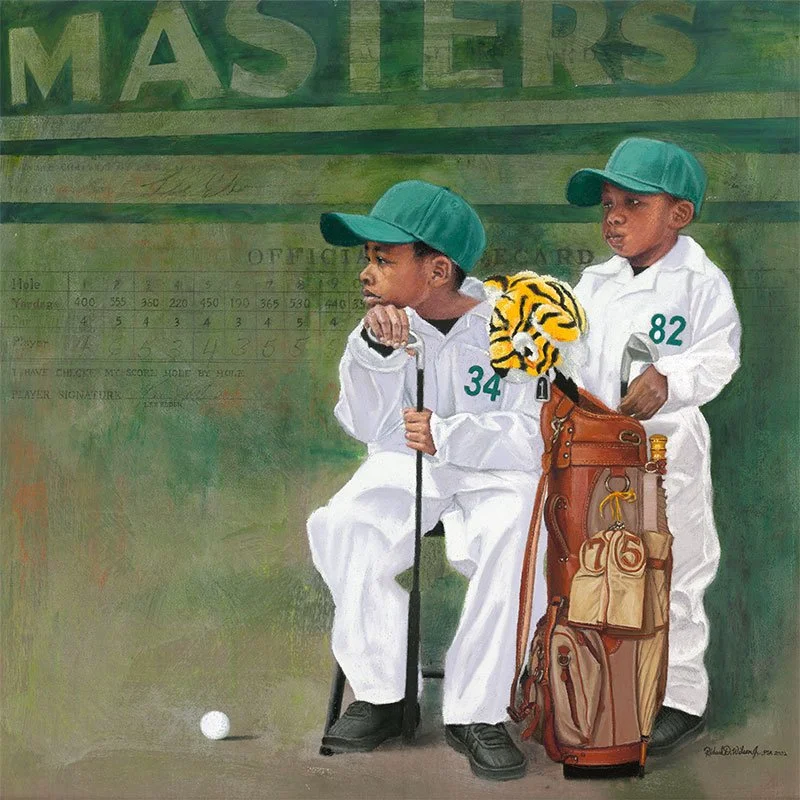 Image 1 of 1
Image 1 of 1


Masters of the Greens
The painting "Masters of the Greens" captures the historical significance of caddies
at the Masters Golf Tournament. It portrays two young boys dressed in the tournament's
caddy uniforms, marked with numbers 34 and 82. This deliberate choice reflects the era
from 1934 to 1982 when all caddies were African-Americans due to the tournament
founder's exclusionary stance against African-American players.
While initially limited to caddying, these individuals sought the chance to play golf,
yet were denied the opportunity. Despite their intimate knowledge of the course, which
often contributed to golfers' wins through their understanding of the greens, they were
relegated solely to the role of caddies. The number 75 on the golf bag signifies the
breakthrough moment in 1975 when Lee Elder became the first African-American to play
at the Masters, a milestone represented by his scorecard in the background of the painting.
The painting also includes subtle references to significant figures in golf history. The
young boys' golf clubs feature a tiger cover with the number one, symbolizing
Tiger Woods, the first African-American to win the Masters. Notably, changes in
tournament rules in 1983 allowed golfers to bring their own caddies, leading to the
absence of African-American caddies at the Masters today. However, this shift enabled
caddies to earn substantial incomes, ranging from six to seven figures.
The painting "Masters of the Greens" captures the historical significance of caddies
at the Masters Golf Tournament. It portrays two young boys dressed in the tournament's
caddy uniforms, marked with numbers 34 and 82. This deliberate choice reflects the era
from 1934 to 1982 when all caddies were African-Americans due to the tournament
founder's exclusionary stance against African-American players.
While initially limited to caddying, these individuals sought the chance to play golf,
yet were denied the opportunity. Despite their intimate knowledge of the course, which
often contributed to golfers' wins through their understanding of the greens, they were
relegated solely to the role of caddies. The number 75 on the golf bag signifies the
breakthrough moment in 1975 when Lee Elder became the first African-American to play
at the Masters, a milestone represented by his scorecard in the background of the painting.
The painting also includes subtle references to significant figures in golf history. The
young boys' golf clubs feature a tiger cover with the number one, symbolizing
Tiger Woods, the first African-American to win the Masters. Notably, changes in
tournament rules in 1983 allowed golfers to bring their own caddies, leading to the
absence of African-American caddies at the Masters today. However, this shift enabled
caddies to earn substantial incomes, ranging from six to seven figures.
